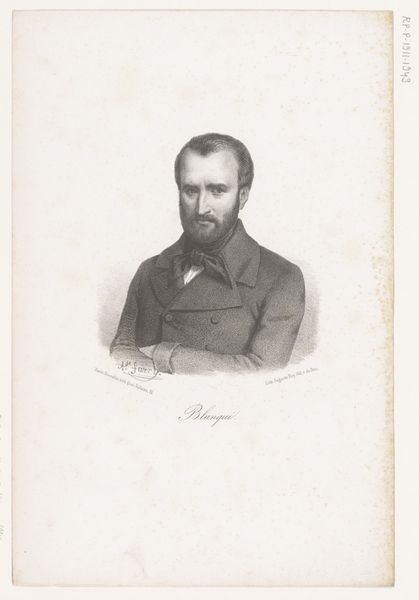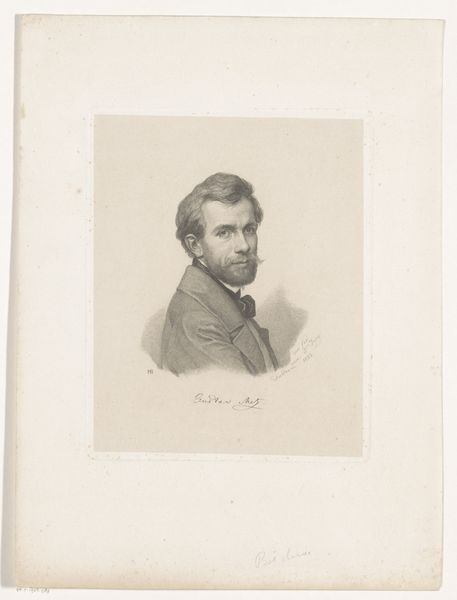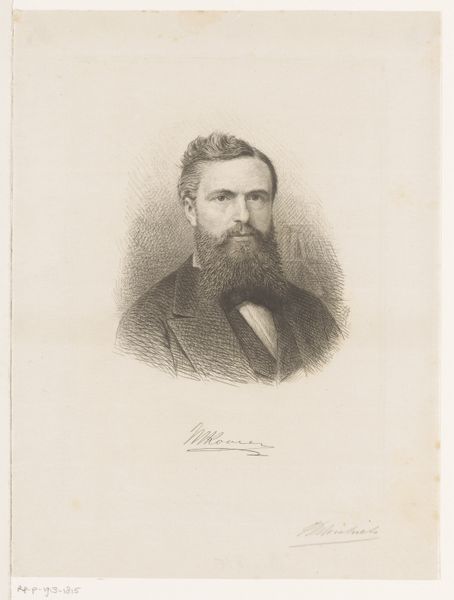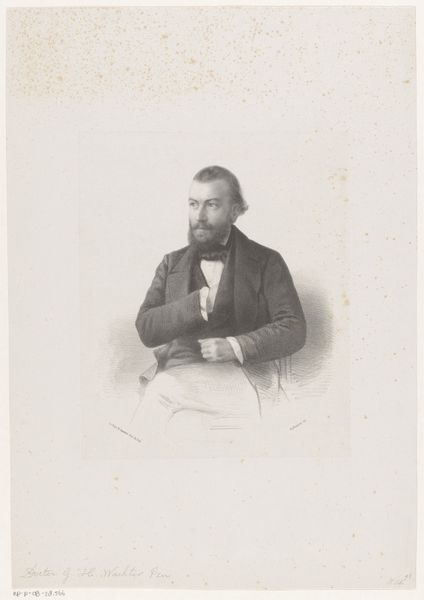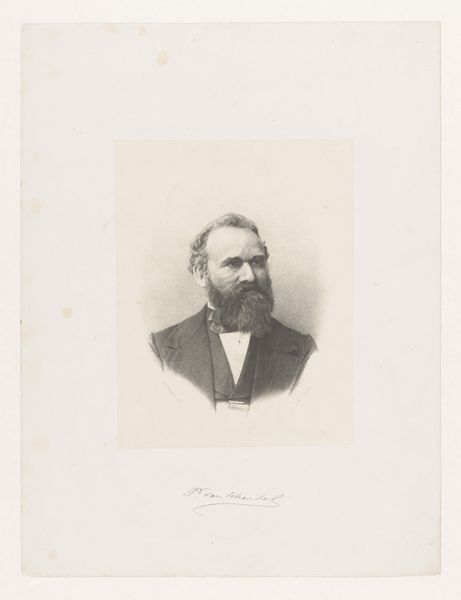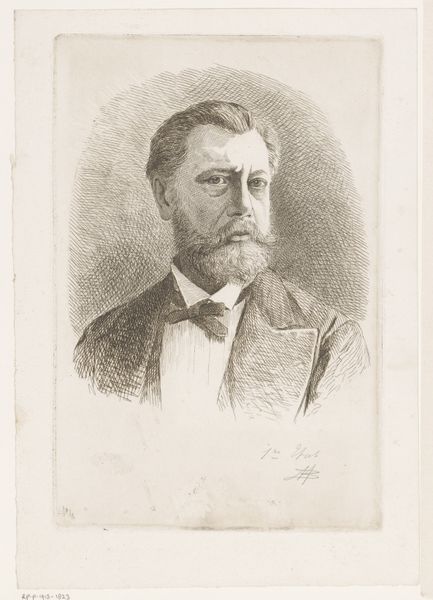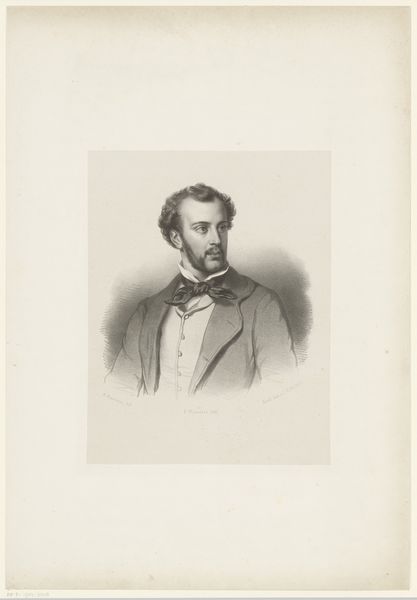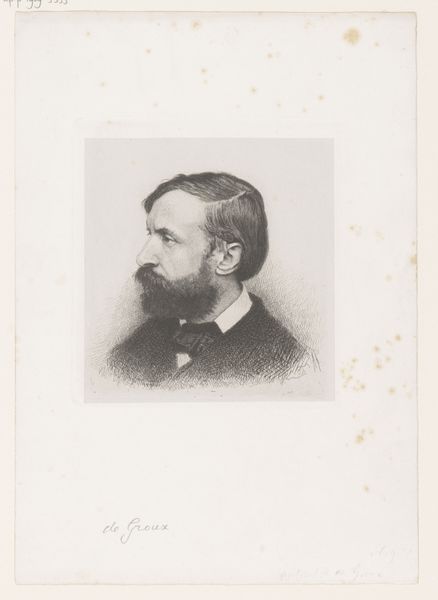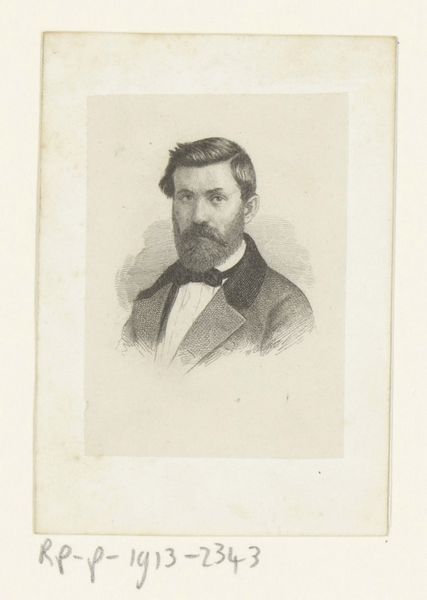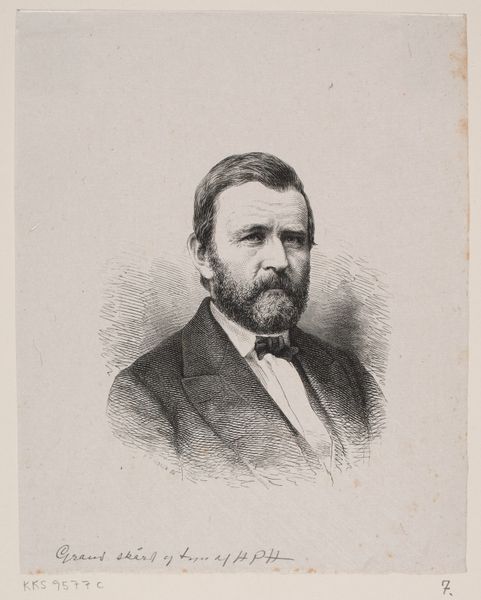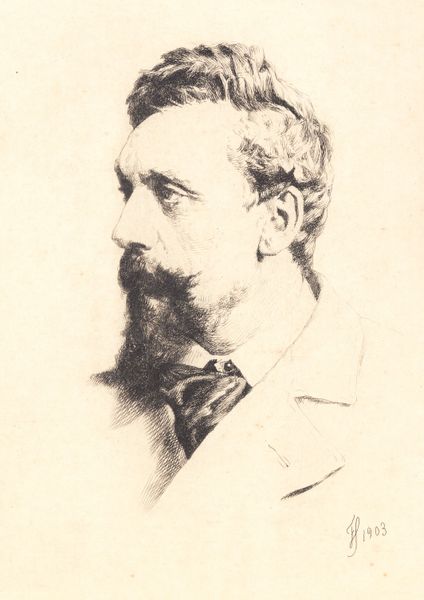
Dimensions: height 225 mm, width 150 mm
Copyright: Rijks Museum: Open Domain
Editor: Here we have Carel Christiaan Antony Last’s "Portret van Johan Bernhard Wittkamp," dating from 1850 to 1887. It's a drawing, maybe graphite or engraving... there's a very strong sense of realism, and it looks like it could have been done from life. I’m really struck by how precise the lines are, and the contrast between the defined figure and the empty space surrounding him. How would you interpret this piece from an art perspective? Curator: The interest resides primarily in the relationship between the depicted object and its method of representation. Notice how Last employs hatching and stippling to construct tonal variations, building volume and suggesting the textures of fabric and hair. The strategic deployment of negative space does precisely what you observe, isolating the figure and heightening our focus on the internal details. The formal qualities create the image. What is your reaction to the placement of the signature? Editor: That's an interesting point; I hadn't noticed the signature really. Its placement seems a little odd; like an afterthought almost. It grounds the picture, and mirrors the line of the coat, though. How does it speak to the form, would you say? Curator: Indeed. The signature functions as a compositional anchor. Its curvilinear form contrasts with the rectilinear lines of the subject's clothing, introducing a dynamic tension. More subtly, its dark tonality reinforces the areas of deepest shadow within the portrait itself. In other words, it's a calculated part of the structural harmony. What did you find surprising? Editor: I’m really beginning to notice that I need to think about seemingly arbitrary elements like signatures to consider an image’s greater structure. It makes me want to explore all drawings, even the most unassuming ones! Curator: Exactly. And by carefully examining how all of the lines and tonal elements work together to create a cohesive structure, we move towards unlocking the potential and artistic intentions of any work.
Comments
No comments
Be the first to comment and join the conversation on the ultimate creative platform.
